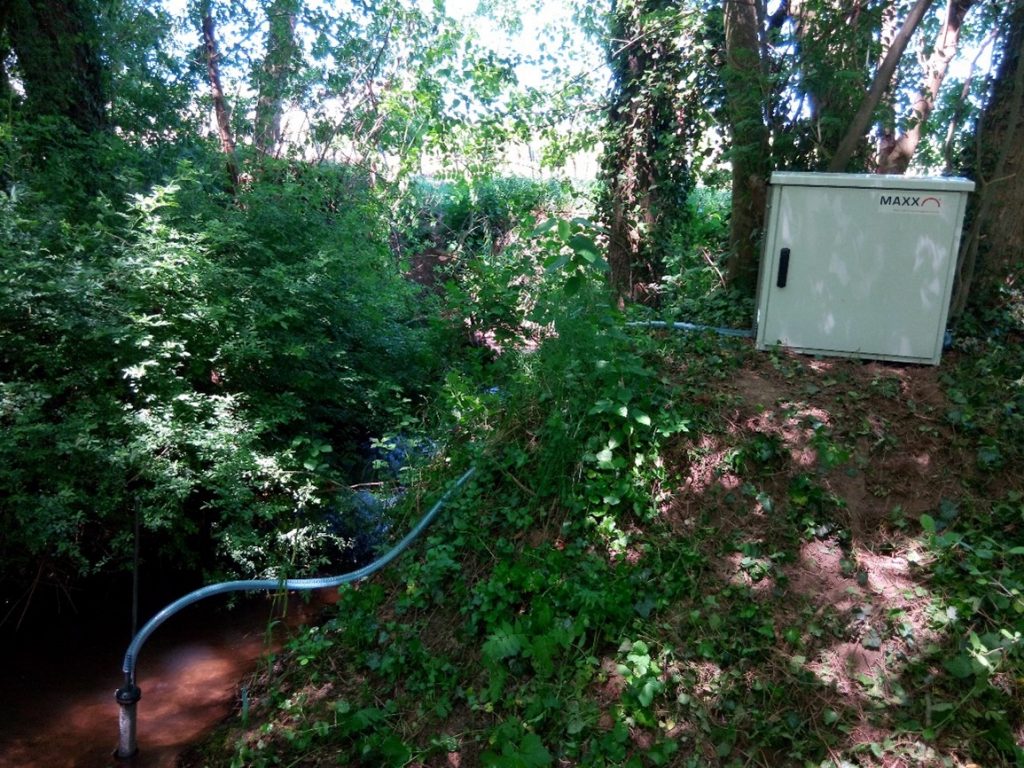In this post, Matthias Liess (UFZ) and Verena Schreiner share the highlights of their recently published paper entitled “Pesticides are the dominant stressors for vulnerable insects in lowland streams”.
Pesticides can enter streams adjacent to agricultural land use via different pathways. There they can harm various organism groups and impact ecosystem functions as well services such as water purification. These impacts can in turn have effects on other ecosystems and ultimately even humans. Previous studies revealed that pesticide exposure of small streams is rarely considered in routine monitoring, suggesting that associated risks could be overlooked. The project entitled “The lowland stream monitoring” (KgM, Kleingewässer-Monitoring) addressed this issue with extensive monitoring, both chemical and biological, at over 100 representative streams across twelve German states (Bundesländer) (Figure 1).

We studied macroinvertebrate communities, pesticide exposure and several other stressors related to agricultural land use or anthropogenic influences at each monitoring site over two consecutive years. Pesticide samples were collected using two methods, grab sampling as done in routine monitoring, and with samplers triggered by rising water levels. The latter event-driven samplers (Figure 2) collect water samples that are likely to contain peaks in pesticide concentration occurrence. These peaks are caused by surface runoff associated with heavy rainfall – one of the major pesticide inputs from agricultural land use.

Pesticide exposure detected in event samples was up to ten times higher than quantified through grab samples at the same location. The detected concentrations were higher than we had expected, illustrated by the fact that regulatory thresholds were exceeded in 80% of agricultural streams. The macroinvertebrate communities, especially vulnerable taxa such as caddisflies (Trichoptera) or mayflies (Ephemeroptera), were already affected at low pesticide toxicities. Pesticide toxicity from agricultural land use was the most relevant stressor for vulnerable macroinvertebrate species, but stream degradation, oxygen deficiency, and elevated nutrient levels also influenced the macroinvertebrate communities in different ways, though to a lesser extent.
Our data show that regulatory thresholds of pesticides would need to be reduced by factors of 5 to 40, depending on the compound, in order to be protective for macroinvertebrate communities in agricultural streams.
The paper “Pesticides are the dominant stressors for vulnerable insects in lowland streams” was authored by Matthias Liess, Liana Liebmann, Philipp Vormeier, Oliver Weisner, Rolf Altenburger, Dietrich Borchardt, Werner Brack, Antonis Chatzinotas, Beate Escher, Kaarina Foit, Roman Gunold, Sebastian Henz, Kristina L. Hitzfeld, Mechthild Schmitt-Jansen, Norbert Kamjunke, Oliver Kaske, Saskia Knillmann, Martin Krauss, Eberhard Kuster, Moritz Link, Maren Luck, Monika Möder, Alexandra Müller, Albrecht Paschke, Ralf B. Schäfer, Anke Schneeweiss, Verena C. Schreiner, Tobias Schulze, Gerrit Schüürmann, Wolf von Tümpling, Markus Weitere, Jörn Wogram, Thorsten Reemtsma, and can be accessed for free until July 29, 2021 in Water Research.
